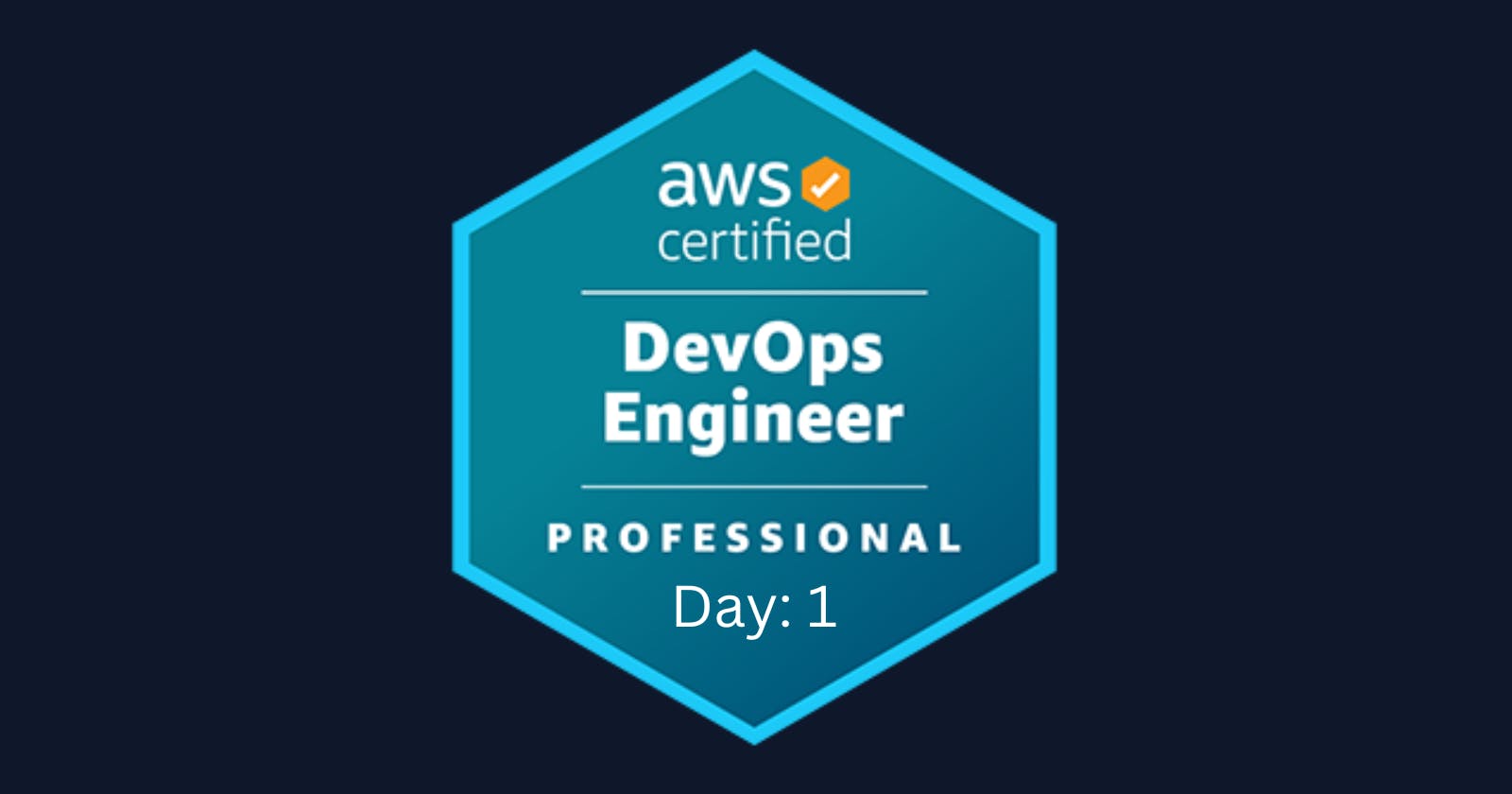Thrilled to share that today marks my Day 1 in the incredible journey towards becoming an AWS DevOps Engineer Professional. 🌐💻 This adventure has been nothing short of amazing, and I'm excited to keep you all in the loop on my progress.
📚 Course Update: Embarked on this journey with an outstanding Udemy course led by the seasoned instructor Stéphane Maarek. The insights and hands-on experience gained have set the stage for what promises to be an enlightening and fulfilling learning experience.
💡 Today's Learnings: As a beginner in this space, Day 1 was packed with foundational concepts and practical experiences.
🔗 Concept of CI/CD:
- Explored the significance of Continuous Integration (CI) and Continuous Deployment (CD) in the DevOps lifecycle.
🛠️ Overview Of AWS CodeCommit:
- Dived into AWS CodeCommit, understanding its role as a fully managed source control service for secure and scalable Git repositories.
🖐️ Hands-on in CodeCommit:
- Applied version control principles through hands-on exercises, getting a feel for collaborative coding.
🚀 Advanced CodeCommit Concepts:
- Delved into advanced features, realizing the power of robust version control practices.
Concept of CI/CD:
Continuous Integration (CI): Explored the practice of regularly integrating code changes into a shared repository. This promotes early detection of integration issues, ensuring a more stable codebase.
Continuous Deployment (CD): Understood the concept of automating the deployment process to rapidly and reliably deliver software changes to production.
AWS CodeCommit:
Managed Source Control: AWS CodeCommit serves as a secure and scalable Git repository hosting service. It eliminates the need for managing infrastructure, allowing teams to focus on coding.
Collaboration Features: Explored collaboration features within CodeCommit, such as pull requests, branch management, and access control, fostering effective teamwork.
Hands-on in CodeCommit:
Version Control Practice: Engaged in hands-on exercises to practice version control, commit changes, and understand the collaboration workflow within a team setting.
Repository Management: Explored repository creation, branching, and merging, gaining practical experience in maintaining a clean and organized codebase.
Advanced CodeCommit Concepts:
Branch Policies: Explored advanced features like branch policies, ensuring code quality through automated checks before changes are merged into critical branches.
Triggers and Hooks: Delved into triggers and hooks for events like commits and push requests, automating workflows and enhancing overall efficiency.
🚧 Overview of AWS CodePipeline:
- Explored AWS CodePipeline, a key player in automating the deployment pipeline.
🔧 Hands-on in CodePipeline:
- Got hands-on with CodePipeline, witnessing the magic of automation in action.
🔗 Integrating CloudFormation into CodePipeline:
- Unpacked the seamless integration of AWS CloudFormation into CodePipeline, understanding its benefits.
🌟 Benefits of Integration:
- Realized the advantages of integrating CloudFormation into CodePipeline – a game-changer for scalable and repeatable deployments.
🚀 Advanced CodePipeline Concepts:
- Wrapped up Day 1 by diving into advanced CodePipeline concepts, setting the stage for a deeper understanding.
AWS CodePipeline:
Continuous Delivery Service: Understood the role of AWS CodePipeline in automating the build, test, and deployment phases of the release process.
Pipeline Structure: Explored the structure of CodePipeline, including stages, actions, and transitions, to create a streamlined deployment workflow.
Hands-on in CodePipeline:
Pipeline Configuration: Engaged in hands-on activities to configure pipelines, linking various stages to automate the flow from code changes to production deployment.
Artifact Management: Learned about artifact management within CodePipeline, ensuring the reliable storage and retrieval of build artifacts.
Integrating CloudFormation into CodePipeline:
Infrastructure as Code (IaC): Explored the concept of treating infrastructure as code using AWS CloudFormation, allowing for the automated provisioning and management of AWS resources.
Integration Benefits: Examined the benefits of integrating CloudFormation into CodePipeline, including repeatability, consistency, and scalability in infrastructure management.
Advanced CodePipeline Concepts:
Custom Actions: Delved into the creation of custom actions within CodePipeline, extending its capabilities to suit specific deployment needs.
Pipeline Orchestration: Explored advanced orchestration features, ensuring a flexible and adaptive deployment pipeline.
I'm ecstatic about the journey ahead and can't wait to share more insights as I progress. If you're on a similar journey or have tips to share, let's connect and learn together! 🚀🌐💡

